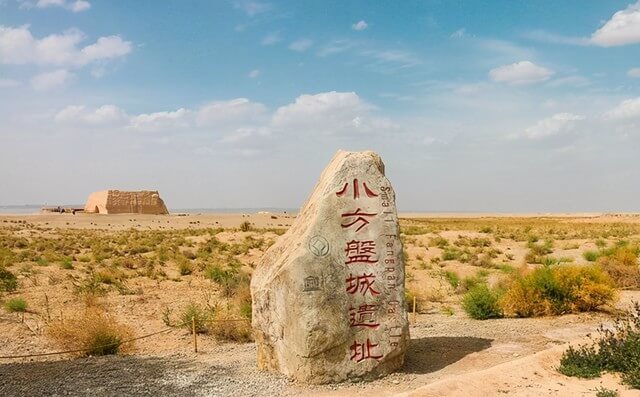In developing China, a lot of energy has been spent on road infrastructure construction. The national transportation network is very developed, basically realizing full coverage of expressways and high-speed rail coverage between major cities.
Here are the ten most beautiful highways in China:
1. The Silk Road: the road network of Chang’an-Tianshan Corridor

At the 38th World Heritage Conference, China, Kazakhstan, and Kyrgyzstan jointly declared the World Heritage Site for the “Silk Road: Chang’an-Tianshan Corridor Road Network”, and it was successful.
2. Qinghai-Tibet Highway

The Qinghai-Tibet Highway starts from Xining City in Qinghai Province in the east and ends at Lhasa City in Tibet in the west. Construction started in 1950 and opened to traffic in 1954. The asphalt road with the highest altitude and the longest route in the world is also the shortest, best and safest road to Tibet. The landscape along the way is magnificent and rich. You can see grasslands, salt lakes, Gobi, mountains, deserts and other landscapes. Open to traffic throughout the year, it is the busiest highway among the five routes into Tibet. Drivers are prone to fatigue after driving for a long time, so there are many traffic accidents. From time to time along the way, you will see trucks turning under the roadbed, so take the Qinghai-Tibet line carefully.
The Qinghai-Tibet Highway is 1937 kilometers long and is a national secondary highway. The roadbed is 10 meters wide, the slope is less than 7%, the minimum radius is 125 meters, the maximum driving speed is 60 kilometers per hour, and the average altitude of the entire line is above 4000 meters. The altitude is high, but after climbing the Kunlun Mountains, the plateau is an ancient lake basin, with gentle fluctuations. A total of 474 culverts and more than 60 bridges have been built with a total length of 1,347 kilometers. The total investment in the initial construction and reconstruction of roads and equipment purchases was 405 billion. Yuan, the average cost per kilometer is 252 million yuan.
3. Karakoram Highway

The Karakoram Highway starts from Kashgar, Xinjiang, China in the north, and passes through the Karakoram Mountains, the Hindu Kush Mountains, the Pamirs, and the western end of the Himalayas.
Passing through the Khunjerab Pass at the China-Pakistan border port, to the north of Pakistan city Thakot in the south; the total length of the highway is 1032 kilometers, of which 416 kilometers are in China and 616 kilometers in Pakistan. When the Karakoram Highway was built in the last century, about 700 people from China and Pakistan gave their lives, which is equivalent to one life per kilometer of the highway.
The Karakoram Highway is known as the highest and most beautiful highway in the world. The lowest elevation of the entire highway in China is 1154 meters and the highest elevation is 4733 meters. It is rated as one of the “Top Ten Dangerous Highways in the World”.
4. Duku Highway

Duku Highway, the highway from Dushanzi to Kuqa. The highway is 561 kilometers long and connects northern and southern Xinjiang. Stretching across the steep mountains and deep mountains and valleys, it connects many ethnic minority communities. Because more than half of its area traverses high mountains and deep river valleys, and connects many ethnic minority communities, it was selected as a “landscape avenue running through the ridge of Tianshan” by “Chinese National Geographic”.
It was completed and opened to traffic in September 1983, which shortened the distance between the north and south of Xinjiang by nearly half from the original more than 1,000 kilometers. It is a monument in the history of China’s highway construction. In order to build this highway, tens of thousands of officers and soldiers fought for 10 years, and 168 road-building officers and soldiers gave their precious lives.
The Duku Highway has a special terrain with many sharp bends and steep slopes. There are more than 280 kilometers of sections above 2000 meters above sea level. Affected by natural factors such as snowfall and icing in the Tianshan Mountains, it is only open for five months a year, from the end of September to the following year. In May, winter traffic control will be implemented for up to 7 months.
5. Sichuan-Tibet Highway

The Sichuan-Tibet Highway is a modern upgrade of the ancient Sichuan-Tibet line. It starts from Chengdu, the capital of Sichuan Province in the east, and ends at Lhasa, the capital of the Tibet Autonomous Region, in the west. It consists of some sections of China’s National Highway 318, National Highway 317, National Highway 214, and National Highway 109.
Significance: Before the opening of the Sichuan-Tibet and Qinghai-Tibet highways, one round-trip from Lhasa to Chengdu or Xining, carrying people and animals in heavy wind, snow and cold, took six months to one year to trek. The Sichuan-Tibet Highway only takes a few days, and after the reconstruction, the road conditions only need three days one way.
Natural risk: Tongmai natural risk has been rectified, Haitonggou, Juebashan, Nujiang 72 abducted the risk. Zheduo Mountain in the snow season has to go around.
In the future: The Sichuan-Tibet Railway will open up the north-south line, the Na-Chang railway in the north, and the Baxu Bangda Town-Qamdo-Tong-Dage Railway.
6. Xiangxi Aizhai Bridge

The Aizhai Extra Large Suspension Bridge is located in Aizhai Town, Jishou City, Xiangxi Prefecture, Hunan Province. It is about 20 kilometers away from Jishou City. ) Key projects in expressways.
Construction of the Aizhai Bridge started on October 28, 2007; the main bridge closure project was completed on August 20, 2011, and the bridge was fully connected; it was opened to traffic on March 31, 2012, and the opening ceremony was held.
The Aizhai Bridge starts from Potou Tunnel in the west, crosses Dehang Grand Canyon and reaches the Aizhai No. 3 Tunnel in the east; the length of the line is 1,779 meters, and the length of the main bridge is 1,414 meters; the bridge deck is a two-way four-lane highway with a design speed of 80 thousand Meters per hour.
7. Tarim Desert Highway

The Tarim Desert Highway (that is, the Taklimakan Desert Highway) is currently the longest road built in the mobile desert in the world.
The passage of the desert highway will play an important role in accelerating oil and gas exploration and development in the Tarim Basin and promoting economic development and political stability in Xinjiang. At the same time, it will also create good conditions for domestic and foreign tourists to go deep into the hinterland of the Taklimakan Desert and develop desert adventure tourism.
Nowadays, there is a magnificent desert road color building at 0 kilometers of the desert road in Lunnan Town and the end of the Cha’an Desert Road in Minfeng County. There is a magnificent desert road introduction monument next to the gate building. On both sides of the Cailou are huge couplets of “Eternal Dream of Shahai Becoming Oilfield” and “Miracle and Desert of Today Become a Thorough Road”. When the car drove into the desert highway, which was called the “Road of Hope” and “Road of Happiness”, people couldn’t help but make people’s thoughts ups and downs, and they were full of emotions!
8. Suhua Highway

The Su-Hua Highway is a highway on the east coast of Taiwan. It is a section of the Taiwan-Nine Provincial Highway. It was built during the Japanese invasion and colonial period. It was a coastal road along the North Road in the Qing Dynasty.
Opened to traffic in May 1932, it was renamed Su-Hua Highway after the war, and then continued to build tunnels and widened the asphalt road. On October 25, 1990, it was opened to traffic in both directions. The starting point in the north is Suao Town, Yilan County, and the ending point in the south is Hualien City, Hualien County. The seaside road is 118 kilometers long. It is built along the coastline and occasionally winds into the hinterland of the flat estuary delta. Along the road, you can see the Pacific Ocean seascape and cliffs and mountains. It is a world-famous scenic highway.
9.213 National Highway

213 National Highway is a national highway in northwest and southwest China. It starts from Xigu District of Lanzhou City and ends at Mengla County, Xishuangbanna Autonomous Prefecture. The total distance is 2,827 kilometers, passing through the 4 provinces of Gansu, Sichuan, Guizhou and Yunnan.
10.214 National Highway

National Highway 214 is a national highway in China, starting at Xining, Qinghai, and ending at Jinghong, Yunnan, with a total distance of 3,256 kilometers. The advantage of 214 National Road is that the entire road presents rare biodiversity, geological diversity, and landscape diversity, rich in nature, history and culture, and unique religious and ethnic customs.